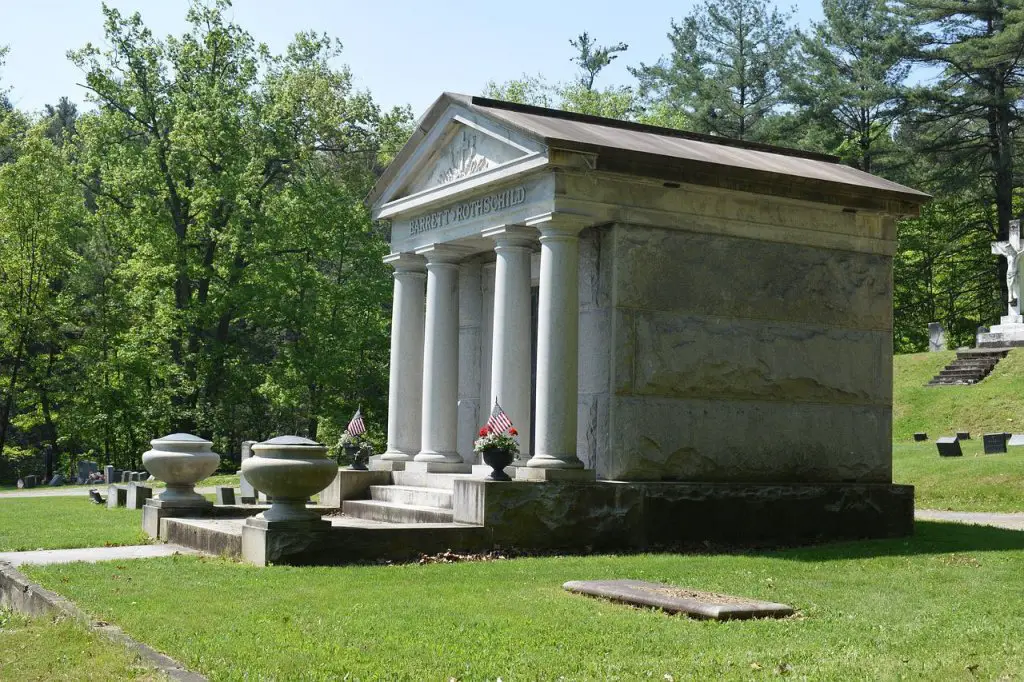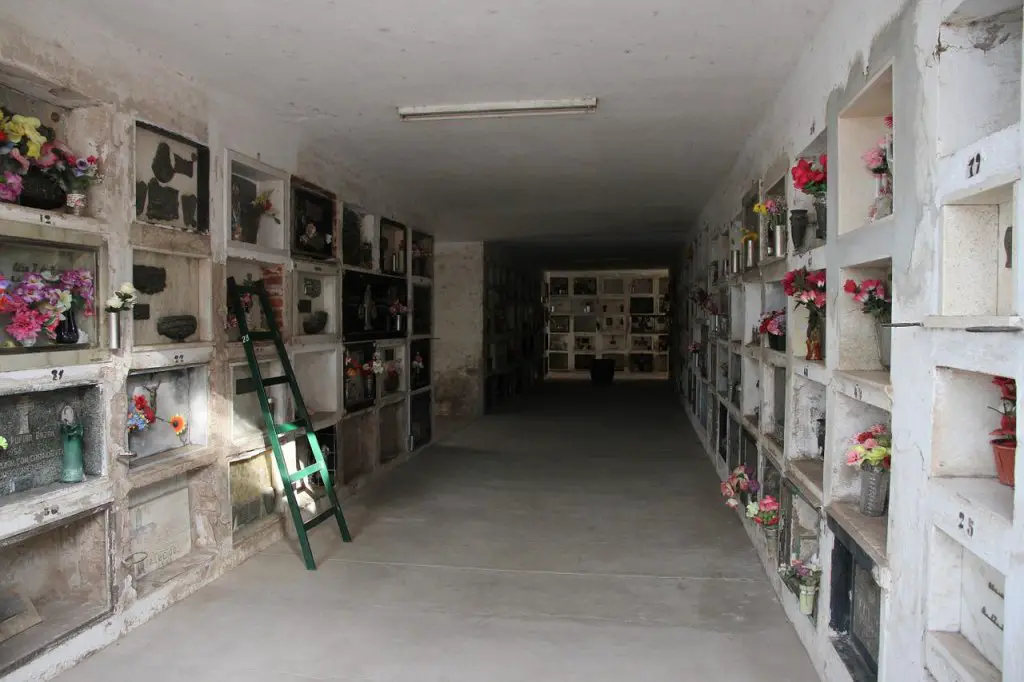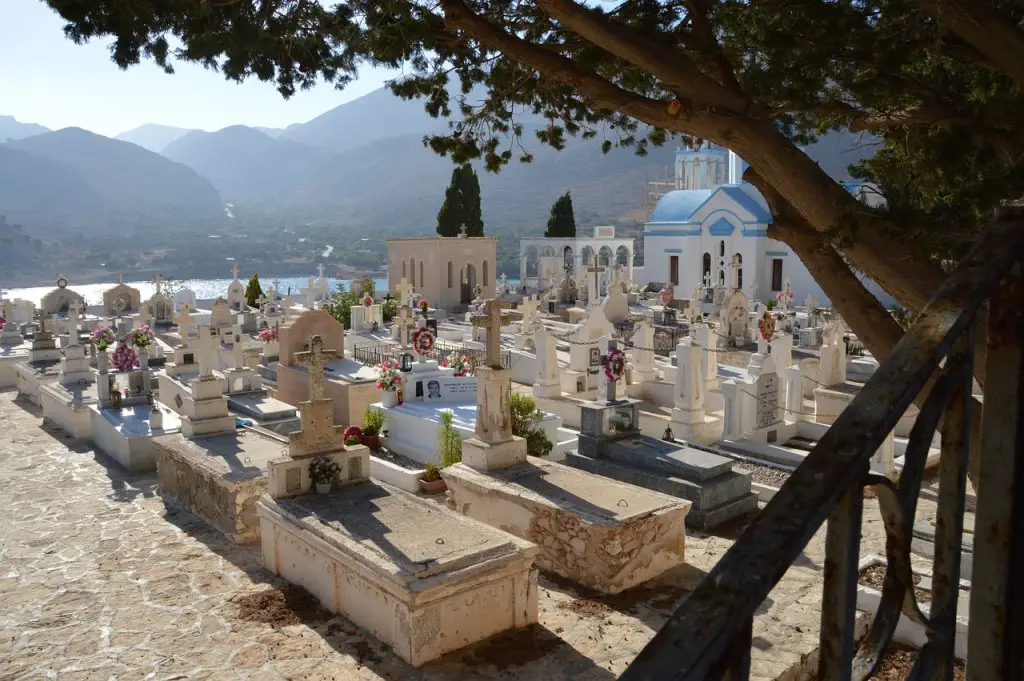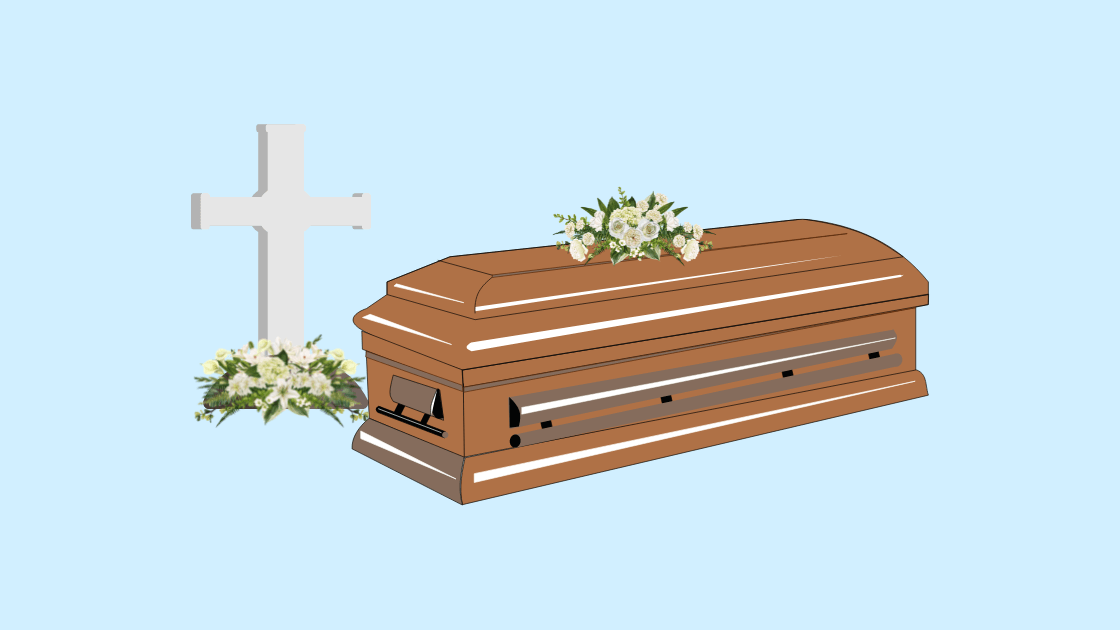Above ground burial or entombment is an option for burying the body or cremated remains of a loved one above ground rather than under it. Mausoleum, columbariums, and other options protect the remains in areas with low sea levels, can offer greener options, and offer convenient viewing for family and friends.
The concept of burial implies putting the body of a loved one in grave in the ground, but above ground burial is an appealing alternative to many. Entombment, as above ground burial, as it is called, entrusts the deceased to a lawn crypt or space in a building – a mausoleum for a casket or a columbarium for cremated remains.
When considering burial options during funeral planning, above ground methods offer a final resting place for your deceased after the funeral services.

Table of Contents
What Are The Advantages Of Above Ground Burial?
When caskets are buried in the ground in areas below sea level, they can become dislodged, filled with water, or damaged. In cities such as New Orleans, which are prone to soft earth, hurricanes, and flooding, floating casket debris and partly decomposed bodies are a health risk preventable when the remains are put to rest above ground. The traditions of the French and Spanish who built New Orleans also supported this type of burial rather than interment, but the high water table is the reason why it is still popular today.
Besides keeping the dead in place, above ground burial makes it convenient for visiting family members who come to pay their respects to the deceased. When the remains are often in a building that is accessible to the elderly widow and protected from the weather, there may even be seating in the structure that allows a mourner to contemplate the departed.
Some mausoleums offer outside access to view the remains, but the niche for the casket or urn is protected with an inner wall of metal, sealed with caulking or glue, and covered with an outer shield face.
Above ground burial uses land responsiily when the columbarium or mausoleum builds upward, so it can be a greener option.
Why Would Family Members Choose Above Ground vs. In-Ground Burial For Loved Ones?
Mausoleums offer a place where several family members can be together for eternity in an above ground burial plot. Families can build a mausoleum to their specifications to create private space just for the family that offers no access to the public.
Above ground burial vaults cost more than other means of burial. Still, the elegance and gravitas that comes from being laid to rest inside of a large and impressive family mausoleum building are worth it to many people.
Most cemeteries also offer community mausoleum space that gives families options for spouses and other family members to be buried nearby. This less private option in a public mausoleum is also more affordable, as the average cost per space is lower.

Available Options For Above Ground Burial?
There are several different options for an above ground burial or entombment.
- Family-owned mausoleum. When a family purchases and owns a building on the property of the cemetery where their family members are entombed, the average cost of a private mausoleum is well over $100,000.
- Cemetery-owned mausoleum. The cemetery often owns the mausoleum where your family members are at rest. When loved ones visit a community mausoleum, they will walk in the same building to find your niche among many other people outside of your family.
- Garden mausoleum. More affordable than the other two indoor mausoleum options, the crypts in an outdoor mausoleum open to the outside. The graves may be placed in niches that are stacked on top of others. The most desirable locations are at eye level so visitors can easily see the headstones. The casket is more protected from the weather than it would be were it in the ground, but this type of mausoleum burial is still outside.
- Columbarium. Similar to a mausoleum, columbaria hold cremation urns instead of crypts. After a body has undergone cremation, the body is placed in an urn vault and displayed inside the columbarium that houses the cremains of many deceased in separate niches.
- Garden wall. Similar to a garden mausoleum but for urns, garden walls are often placed along walkways, so you can view the plaque of your loved one as you pass. They often have benches for people to be able to sit down and reflect or pay their respects.
- Scattering gardens. People who wish to take the ashes of their loved one and scatter them somewhere may do so in a scattering garden. This can be nice for people who want to scatter their loved one’s ashes somewhere they will be able to return to frequently rather than in the ocean, the Grand Canyon, or some more distant location.
- Lawn crypts. Essentially an underground mausoleum, a lawn crypt has a raised concrete vault that can hold one casket in a single crypt or multiple caskets arranged side-by-side or one atop another. These crypts have drainage systems should water get inside and attempt to dislodge them, so lawn crypts offer peace of mind to families in areas with weak soil or a high water table.

What Are The Cost Factors And Types Of Fees?
How much do above ground burial options cost? As many different factors affect above ground burial pricing, the best place to start is by reaching out to a funeral home and allowing the funeral director to assist you in weighing out costs and benefits. They are often familiar with the local cemeteries, so they are often a great resource to utilize when shopping around.
Privacy, space, and the material that will house your loved one figure into the price. If you desire a private mausoleum so that the space is just reserved for yourself and your family, your purchase will be more expensive. If want space for a large number of relatives, your costs will be higher than if you want a single or double mausoleum space. If the cemetery offers perpetual care of gravesites and mausoleums, you can expect to pay more upfront.
Many mausoleums are made of granite, but the quality and texture of the stone affect the price, as does the overall design.
Entombing your loved one in marble or inside of a beautiful and elegant large building will of course be more expensive than something simpler like spreading their ashes in a scattering garden.
While the costs can be confusing, the Funeral Rule of 1984 and its amendment in 1994 ensure that funeral homes and cemeteries must be upfront with customers about pricing and about state and local requirements for burial. For example, burial in a mausoleum does not require the same type of burial vault or grave liner that interment requires, and the funeral home cannot claim you need this or any other optional service not required by law.

How Do The Costs Compare? Is Traditional Burial Cheaper?
The average cost of a traditional burial will vary depending on the area, but is somewhere around $7,000-8,000 plus burial plot and cemetery costs. This is far cheaper than some of the more expensive and elegant methods of above ground burial. Purchasing a family-owned mausoleum can be well over six figures, depending on the size of the building.
A walk-in mausoleum for a family of eight can average between $300,000 and $600,000, making a traditional burial far more cost-effective.
That does not mean that all methods of above ground burial are more expensive though. Going the scattering garden route can average between $100-1000 dollars, being much more affordable than a traditional burial. If you choose to scatter the ashes of your loved one on your own property, this can be even more affordable of course.
The cost will always depend on the privacy, space, and material that you desire your loved one to laid to rest in or around. For a good overview of the price ranges for mausoleums, crypts, grave markers, and monuments, click here. Careful planning can yield you a more affordable above ground option if that is what you want for yourself or a loved one.

